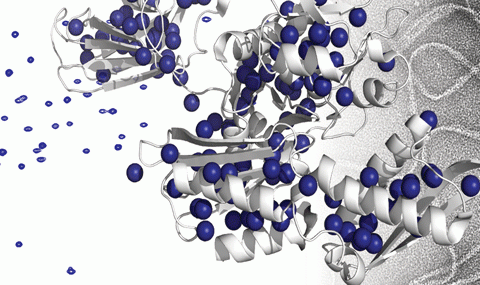Magnetic resonance (MR) spectroscopy is a powerful technique for determination of biomolecular structure, characterization of protein-protein interactions, and dynamics studies. MR measures the energy of interaction between the magnetic dipoles of atomic nuclei and a strong applied magnetic field and can simultaneously detect separate signals for hundreds of individual atoms within a macromolecule. These signals can then be visualized as peaks in one, two, or more dimensions and analyzed to provide detailed information on the local environments of individual atoms, and how these environments change over a very broad range of timescales (picoseconds up to seconds).
This potential to probe dynamics in a site-specific manner provides MR the unique ability to quantitatively assess the structure, kinetics and thermodynamics of sparsely populated conformations that are invisible to other biophysical techniques and are often important for catalysis, ligand binding and allostery. Thus, MR is a powerful tool with the unrivaled capacity to obtain atomic-resolution maps of transient protein conformations, structurally characterize interactions between biomolecules, and deeply probe protein dynamics – all of which are critically important for understanding the inner workings of the myriad of complex molecular machines that keep our cells alive.



